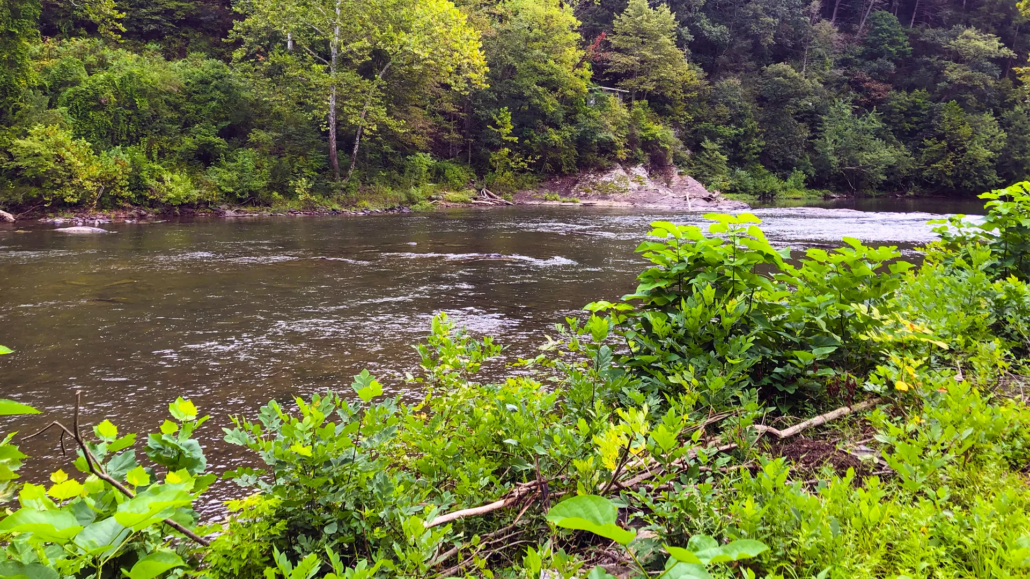5 Tips for Netting More Creek Smallmouths in the Summer
As the summer sun beats down on the serene waters of our favorite creeks and rivers, smallmouth bass fishing reaches its peak — and, for those of us who appreciate the challenge of targeting these bronze warriors, this season offers a wealth of opportunities.
Here are some tips and techniques that have proven successful time and again for summer smallmouth.
Tip No. 1: Target Smallmouth Bass in the Early Mornings and Late Evenings for Increased Success
Summer days can be blazing hot, and those high temperatures drive smallmouth into deeper, cooler waters around midday.
To maximize your chances of hooking into these lively fish, focus your efforts during the cooler parts of the day like the early mornings and late evenings. During these times, bass are more active near the surface, making them easier to target with topwater lures such as poppers or floating jerk baits. These lures create enticing surface disturbances that provoke aggressive strikes from hungry bass.

Tip No. 2: Mimic the Local Prey that Smallmouth Bass Target
During the summer, smallmouth bass are actively feeding to build energy reserves and tend to primarily target smaller prey fish, crayfish, and aquatic insects. Use this to your advantage and match your lure choice to the local prey to greatly increase your odds of success.
For example, if you notice schools of baitfish near the surface, opt for small crankbaits or inline spinners that mimic fleeing minnows. Alternatively, if you observe crayfish activity along rocky bottoms, a bottom-bouncing jig or a crawfish-patterned soft plastic can be irresistible to hungry smallies.
Simply, understanding the prey fish that smallmouth are targeting will greatly help in your pursuit. Take the time to take in your surroundings and see how the fish are reacting, then use that knowledge to your advantage.
Tip No. 3: Look for Smallmouth Bass Habitat
Returning to summer temperatures, as those temps rise, smallmouth bass become more active and readily pursue bait in cool, oxygen-rich water.
It’s here, in the cooler water, smallies are often found near structures such as rocks, fallen trees, and submerged logs as these provide shelter and ambush points for the bass as they wait for prey. Focus your efforts around these structures, casting your lure close to them for the best chance of a strike. In creeks, look for deeper pools, shaded areas under overhanging trees, or where cooler tributaries join the main flow.
Tip No. 4: Adjust to Water Clarity to Catch Smallmouth Bass
There’s no arguing that water clarity plays a crucial role in determining lure visibility and effectiveness. Thus, understanding how smallmouth bass react in differing waters will help you net more fish.
In essence, in clear water conditions, smallmouth tend to be more cautious and selective. Use natural-colored lures and employ a stealthier approach to avoid spooking fish. Conversely, in murky or stained water, opt for brighter or more contrasting lure colors that stand out and increase visibility.
Adjusting your presentation to suit the prevailing water conditions can make a significant difference in your catch rate.

Tip No. 5: Embrace Conservation When Fishing for Smallmouth Bass
While enjoying the thrill of creek fishing, it’s essential to prioritize conservation efforts.
Practice catch-and-release whenever possible to ensure the sustainability of smallmouth populations. Respect local regulations and guidelines regarding fishing seasons and limits and minimize your impact on the creek ecosystem by disposing of trash properly and avoiding disturbances to local wildlife and vegetation. Additionally, if you see another person’s trash, be safe and collect it for disposal.
Smallmouth fishing in creeks during the summer is more than just a hobby; it’s a journey into the heart of nature’s tranquility and beauty. By understanding smallmouth bass behavior, selecting the right gear, fishing for the right locations, and embracing conservation practices, anglers can enhance their experiences and contribute to the preservation of smallmouth habitat.


